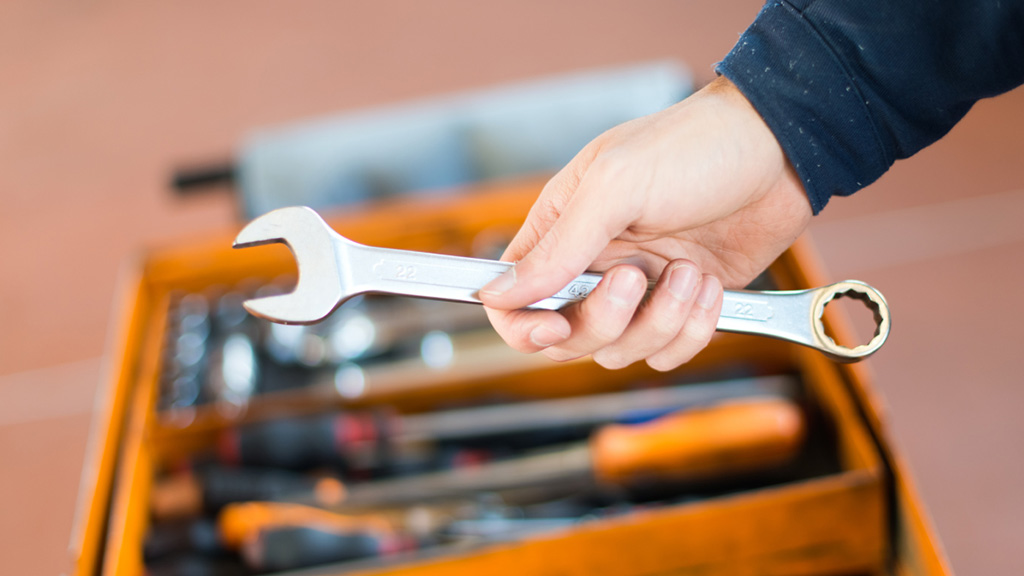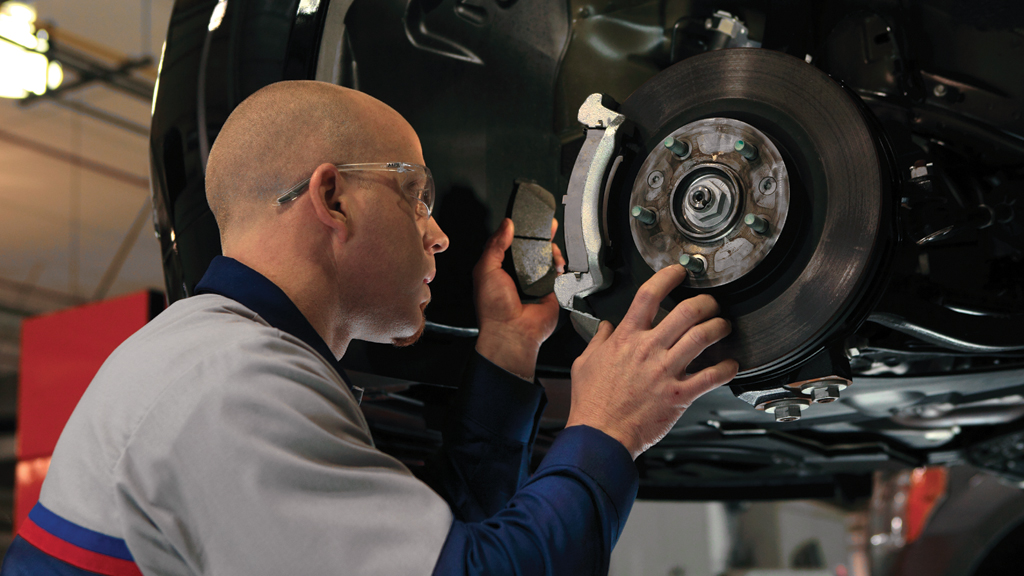7 Tips To Help Keep Your Car Out of the Shop
Follow these simple, money-saving recommendations from Ford master technician Jim Twitchell—because nobody likes being without wheels.
By Kathy Sena
1. Establish a routine vehicle-maintenance checklist—and then actually stick to it.
Sure, you’re not a trained mechanic. But there are a number of things you can do to help maintain your car. Consult your owner’s manual—or use this tool—to help you set up a schedule for each item. The acronym “LIFT BOW” may help you remember the list:
- Lights: Check headlamps, brake lights, etc., and have any faulty bulbs replaced.
- Interior: Clean and vacuum the inside of your vehicle.
- Fluids: Check and fill the coolant, power-steering, transmission, windshield-washer and brake fluids.
- Tires: Check your tire pressure and tread.
- Brakes: Investigate any unusual noises or difference in stopping ability.
- Oil: Check and change your oil.
- Windows: Look for any pits, scratches or small cracks.
For more details about each of these, read The Incredibly Simple Car-Maintenance Checklist.
2. Don’t accidentally deplete your battery.
Fortunately, it’s not as easy to kill your battery as it used to be. “In newer cars, there’s a function that protects your battery when things like the DVD player or headlamps are left on [when the car is turned off] for a predetermined amount of time,” says Twitchell. For slightly older vehicles, however, you’ll want to be extra-careful not to leave on your lights or anything else that could drain power, because you could end up needing not only a jump start but also a whole new battery. “There’s a chemical reaction that takes place when the battery is depleted like this, and it shortens battery life,” Twitchell explains. Which adds up to service time that could be avoided.
3. Never ignore your “check engine” and other warning lights.
Those lights mean your car’s computer is trying to tell you something, and even though you may want to wish them away or attribute them to faulty wiring, not heeding them may cost you. If you see the check-engine light on your dashboard, it’s a good idea to take your vehicle into the shop right away in order to avoid having to leave it there even longer later on. A mechanic will read the computer’s “diagnostic trouble code” to determine the cause of the warning light—which could be something as minor as a loose gas cap or as serious as a malfunctioning catalytic converter. When you have this info, you can decide how and when to proceed with the repairs. If you wait too long to have a warning light checked out, some codes can be erased, depending on the vehicle system, says Twitchell. But the underlying problem is likely to remain, possibly getting worse and worse, until you deal with it.
4. Get your alignment checked after hitting a monster pothole.
If you notice your car drifting or pulling after you hit a pothole or curb, have your car’s alignment looked at right away. “The biggest issue regarding alignment is tire wear, which affects the tires’ longevity and equals money and time in the shop,” Twitchell says. Safety is a big issue here, too. “In severe cases, tire wear can culminate in a blowout.”
5. Fill your vehicle with the right fluids.
If you add your own coolant, oil or other fluids, be sure to follow your owner’s manual closely. Quality—and accuracy—counts. “If you add the wrong brake fluid, for example, you can mess up the seals and create a leak,” says Twitchell. And, he points out, mixing different kinds of coolants can adversely affect your cooling system.
6. Easily check off your automotive “to-do” list with Ford’s The WorksTM Vehicle Checkup Package.
This includes a multi-point inspection, synthetic-blend oil change, tire rotation and pressure check, brake inspection, fluid top-off, battery test, filter check and belts-and-hoses check. Even though he’s a Ford master technician himself, Twitchell takes his own car in for The WorksTM, he says. “They do so much, and add all the necessary fluids, in one visit. You really can’t beat it.” Afterward it’s important to follow up on The WorksTMpackage report card. You will receive a list showing green, yellow or red scores covering everything from battery life to tires and brakes. Green means you’re in great shape, yellow means you’ll need to address the issue fairly soon, and red means the item needs attention ASAP. “The report card helps you plan ahead,” says Twitchell. “It’s a road map for future repairs, and it helps you minimize downtime by pre-planning for the most convenient time to have something done.”
7. If your car has to be in the service bay, make sure you can be reached.
It is so simple, but also easy to forget: If you want your vehicle back quickly, give your service advisor your email address and your best contact number (or two), Twitchell advises. “This is a biggie,” he says. “You don’t want to be playing phone tag. A missed call means your car will be waiting longer for repair, because the law states that once your car is diagnosed, the work can’t begin until you have given authorization to pay for the repair.” So keep your cell handy and stay in touch.




